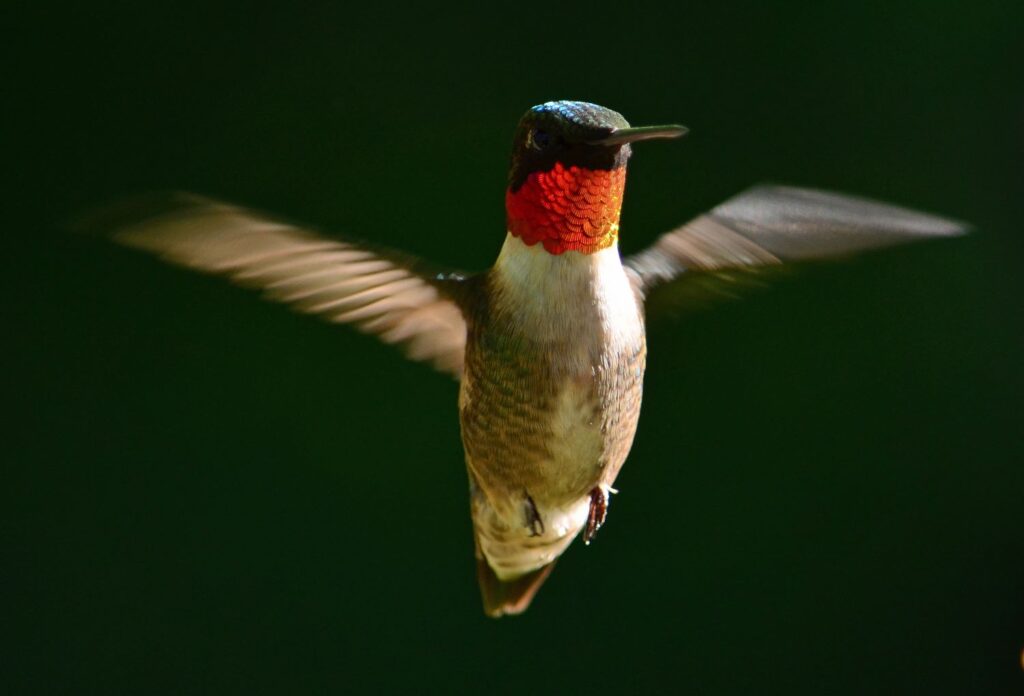Physical Address
304 North Cardinal St.
Dorchester Center, MA 02124
Physical Address
304 North Cardinal St.
Dorchester Center, MA 02124

I’m not ashamed to admit that birding is my “thing.” I’ve been mesmerized by birds for almost 25 years! Let’s explore one of my all-time favorite visitors here in the foothills of the Smokies: the hummingbird. Specifically, I’m talking about the Ruby-throated Hummingbird, the only hummingbird species that typically visits here.

The Ruby-throated Hummingbird is a little dynamo, weighing just a few grams but packing a punch with its aggressive and territorial nature. These little birds fiercely protect their feeding grounds, often engaging in aerial acrobatics to ward off intruders. In my family, we call this “hummer wars.”
Males and females have some distinct differences that make them pretty easy to identify. The male has a brilliant, iridescent ruby-red throat patch, which sometimes looks black. He also has a forked tail with pointed tips. The female has a more subdued appearance with a white throat, green back, and a rounded tail with white tips. Both are equally mesmerizing, zipping through the air with their rapid wingbeats.

I used to have several hummingbird feeders in my garden, and they were always a big hit with the local hummers – until a bear decided to join the party at the end of April! After finding my feeders in a state of disarray (and my yard resembling a battlefield), I had to bring them in. For the first time, I am relying on the natural beauty of flowers to attract these teeny jewels.

From my office window, I get to witness the daily ballet of hummingbirds as they flit from flower to flower in my garden. Here are some of the flowers that have become hummingbird favorites:



Hummingbirds usually arrive in the Smokies around mid-April, fresh from their long journey north from Central America. They stay with us through about mid-October, filling our gardens with their lively presence. It is fascinating to watch them zip from flower to flower, sipping nectar and fueling their high-speed antics.
These little birds have an incredibly fast heartbeat, often exceeding 1,200 beats per minute, and their wings beat up to 80 times a second! No wonder they need so much nectar to keep going. A hummingbird drinks around half its body weight in nectar every day.

One of the most fascinating aspects of hummingbirds is their long, specialized tongues. Their tongues can extend far beyond the tip of their beaks, allowing them to reach deep into flowers to access nectar. The tongue is grooved like a double straw and is covered in tiny, hair-like structures. These lamellae help trap nectar, and with each lick (up to 13 times per second!), the tongue flicks back and forth to draw the sweet liquid into their mouths.

Mating season is another spectacle, with males performing elaborate aerial displays to court the females. Once a pair has mated, the female builds a tiny cup-shaped nest, often using spider silk and plant fibers. She then lays two white eggs about the size of small jelly beans, which she diligently incubates.

Despite their size, hummingbirds are mighty in spirit and energy. They bring a sense of wonder and joy, whether you’re observing them from your window or sitting quietly in your garden. So, next time you’re in the Smokies, keep an eye out for these incredible creatures. And if you’re lucky enough to have a garden, plant a few of their favorite flowers and enjoy the show!
Share your hummer experiences with everyone in the comment section! Until next time, happy birdwatching!
The Smoky Mountain Nature Lady

The hummingbird competes with the stillness of the air. – Chogyam Trungpa